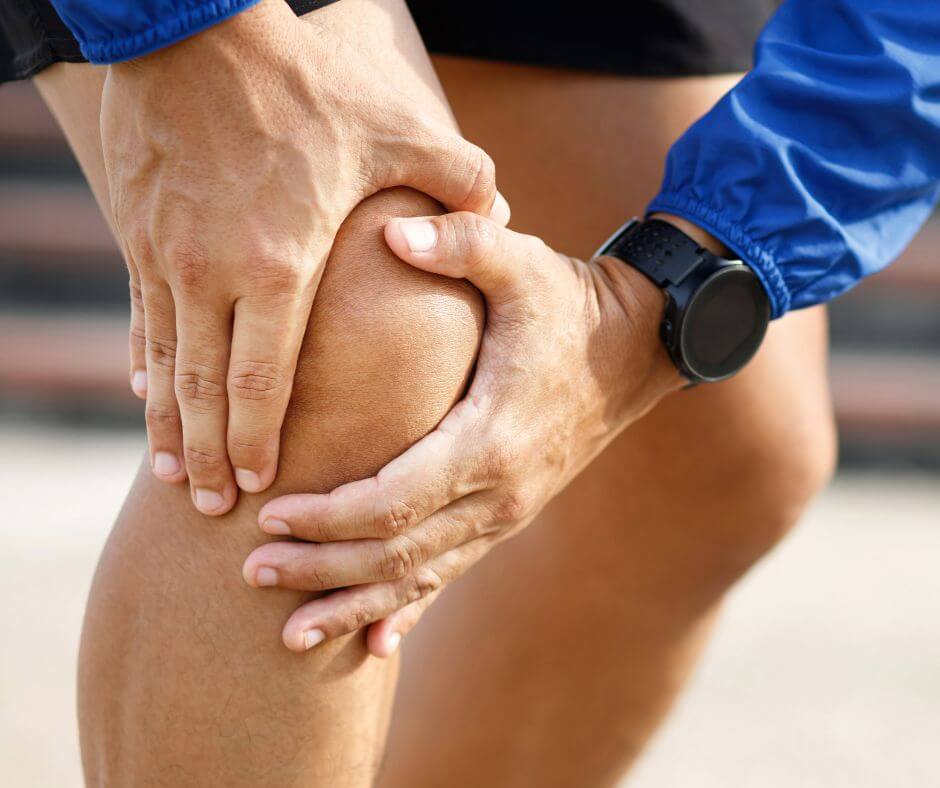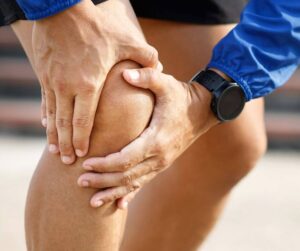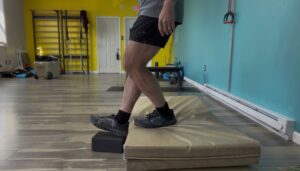Dealing with a stiff knee after surgery can feel incredibly frustrating. Maybe you hit your 120-degree range-of-motion target, but the joint still feels tight—especially first thing in the morning, after sitting for a while, or when you’re trying to walk or hike and the movement just feels “off.” You’re not looking to start from square one again… you just want that extra boost to help things move the way they should.
After years of treating patients, we’ve found four exercises that are particularly great at exactly that. They help reduce stiffness, improve mobility, and supplement the strength and range-of-motion work you’ve already built through physical therapy. Just keep in mind: these aren’t meant to replace PT, and you should always talk to your doctor before starting anything new—especially if you’re early in recovery. Once you’re given the go ahead – you’ve got to try out exercises for a stiff knee after knee surgery!
What You Need
You’ll need a muscle scraper, a chair, and a stair step (or the chair again if you don’t have stairs). The stretches all work to help the knee bend safely, while scraping eases tension in the surrounding tissues so the joint moves more freely. Together, they give your knee a noticeable mobility boost. This routine is especially helpful if you tend to feel stiff after long drives, tight in the morning, limited on hikes or daily walks, or you’re “done with PT” but still not completely comfortable.
1. Muscle Scraping for Knee Stiffness
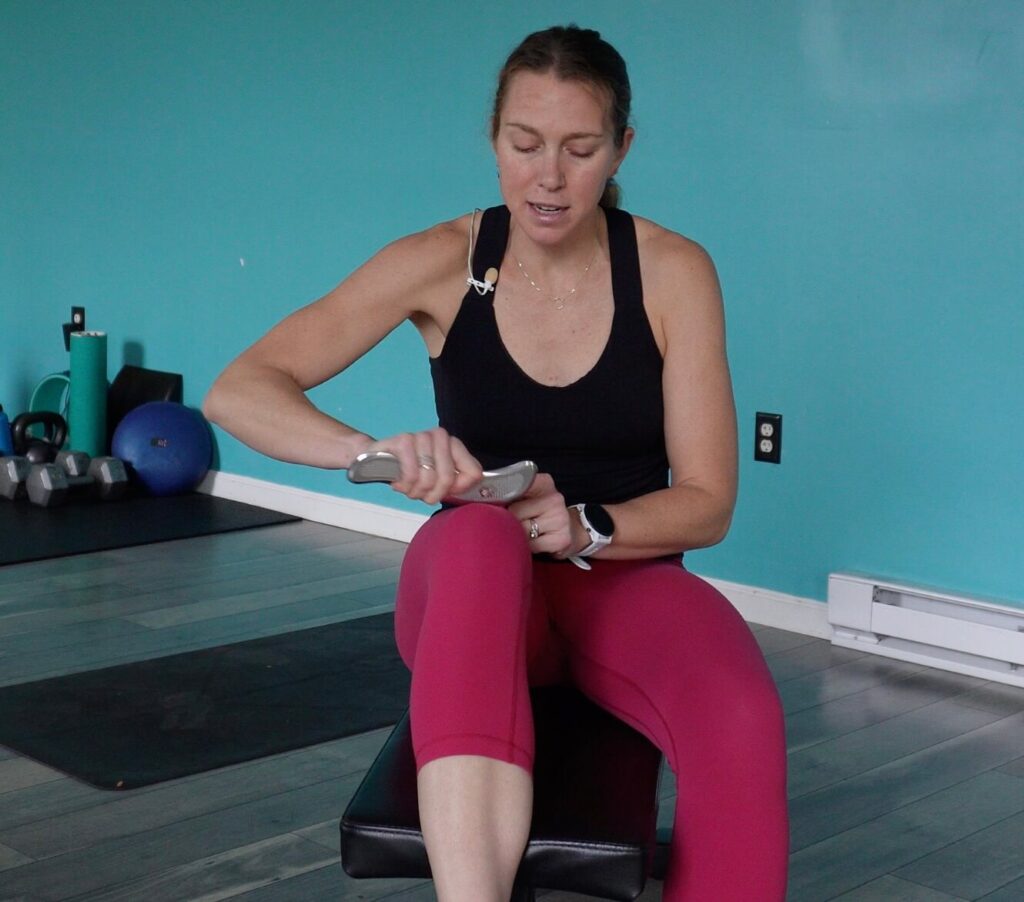

Muscle scraping helps loosen tissue and reduce tightness.
If you’re looking for more general detail on muscle scraping check this out!
ATTENTION: No muscle scraping until you’re at least four weeks post-op, even if the scar looks healed on the surface, the underside is still healing.
Start with the big muscle groups.
Spend one minute going over the inner thigh (adductor), quad, and IT band:
- Scrape the entire area (knee to hip)
- Don’t just pay attention to pain points! Releasing tension in other areas will help release where it hurts.
Muscle Scraping the Scar:
- Bend your knee slightly and move across the entire scar in small 1 inch strokes for 1 minute. Stay within your tolerance.
You can spend 3–4 minutes total on all scraping.
2. Seated Knee Flexion Stretch
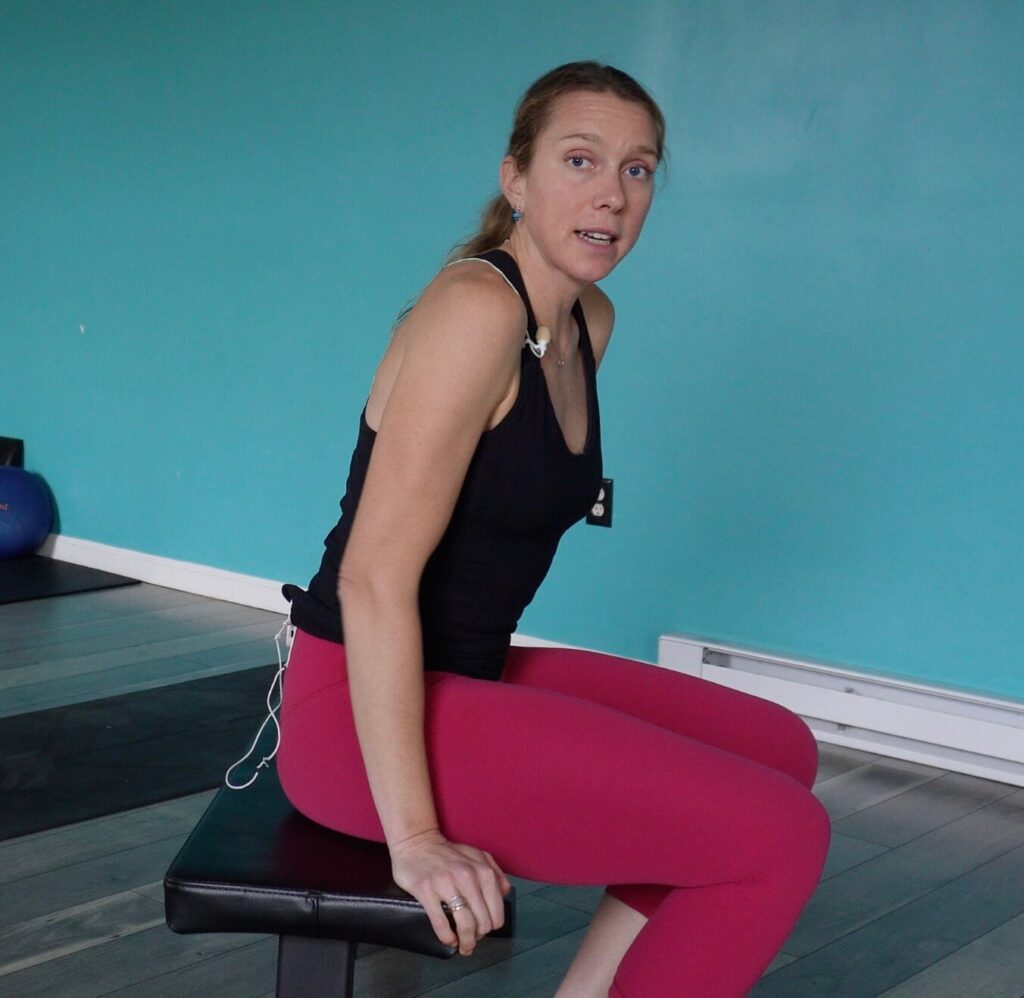
- Sit with both feet flat.
- Scoot forward until you feel a stretch.
- Pause for a few seconds.
- Return to the start.
Repeat 10 times for 3 rounds.
Try to move a little deeper each time.
3. Squat Stretch on a Chair
- Place your shin on a chair.
- Let your ankle hang off the edge.
- Drop your hips down.
- Move into a deeper knee bend until you feel the stretch.
- Hold for a moment and come back up.
Repeat 10 times for 3 rounds.
Pro Tips: Go slightly lower each rep. and avoid hiking your hip! It will try to cheat to protect your knee.
On the last rep, hold the stretch a little longer!
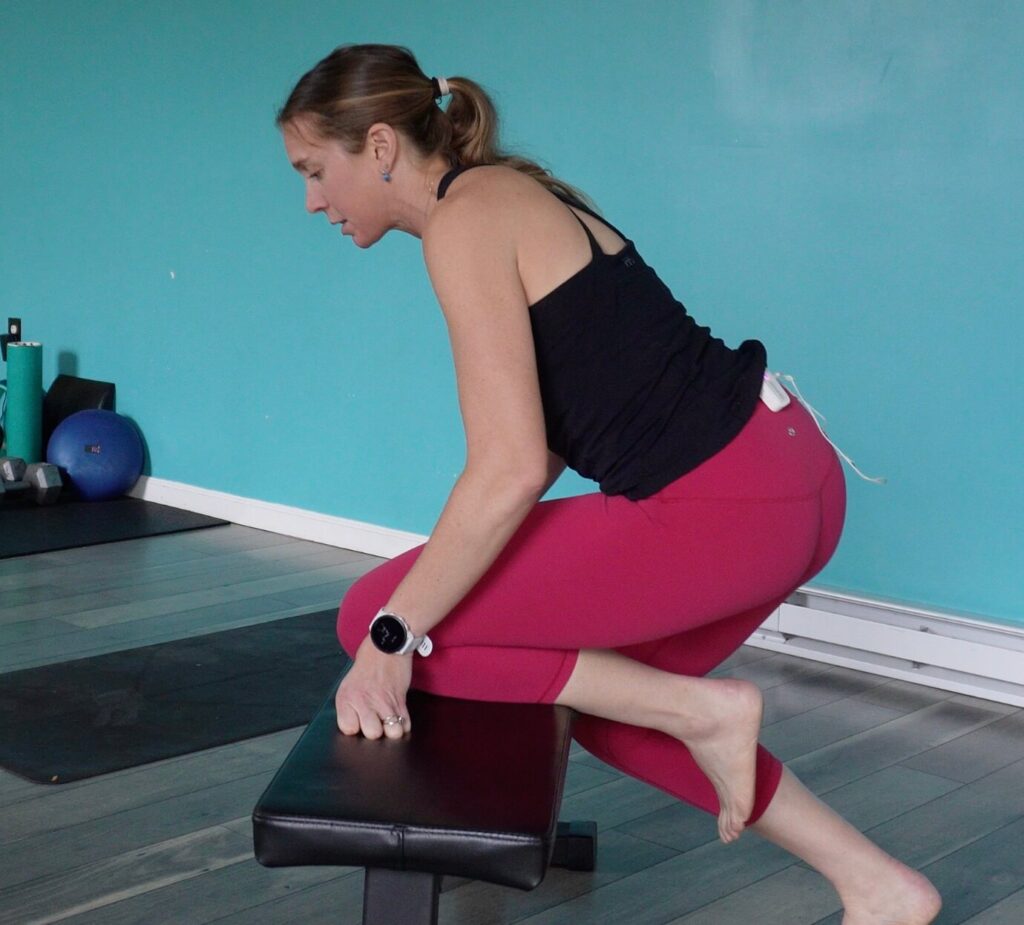
4. Stair Squat Stretch

- Place your knee on the second step.
- Hold the banister for stability.
- Slide your knee forward and hips down.
Repeat 10 times for 3 rounds.
If you don’t have stairs, you can use the chair setup again! Elevating the height of your foot can really change how this feels!
Taking It An Extra Step
The best part about all 3 exercises? To help get even more of a boost, all 3 exercises for a stiff knee after surgery can be used with muscle scraping to promote healing and reduce stiffness. That puts your knee into flexion while using muscle scraping to help break up stiffness.
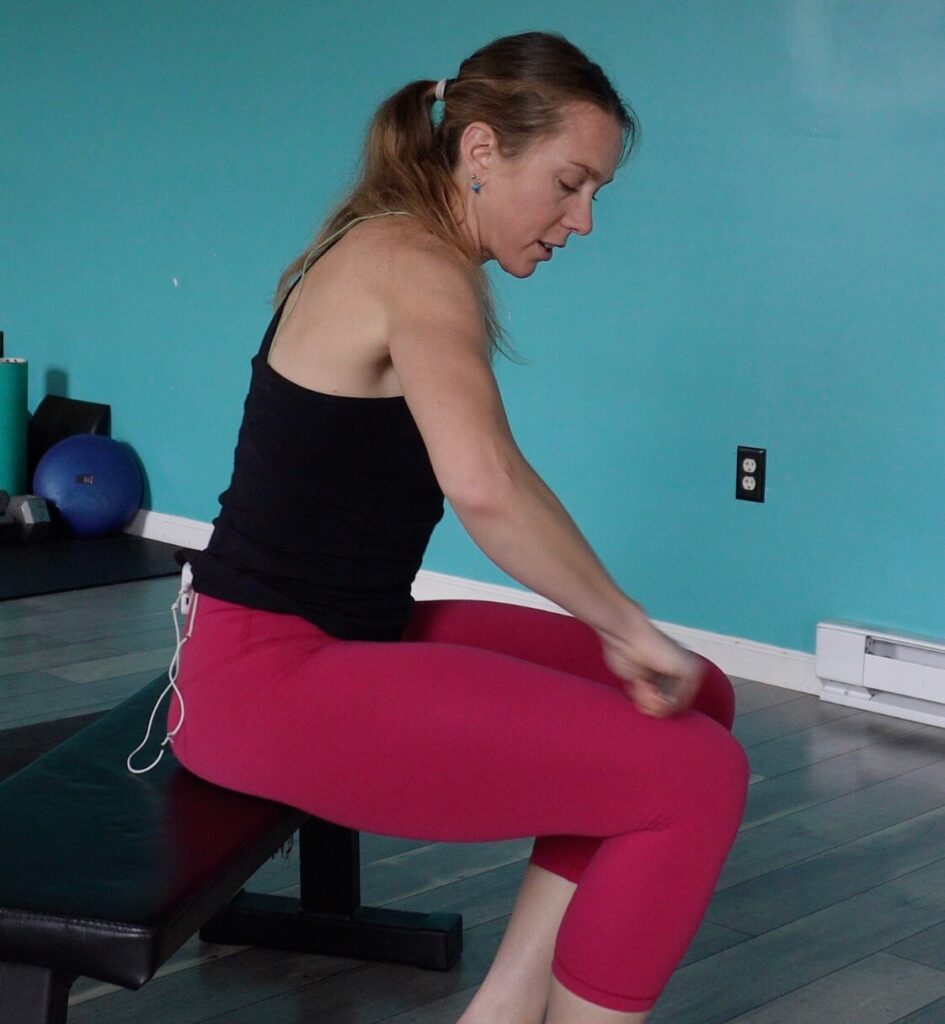

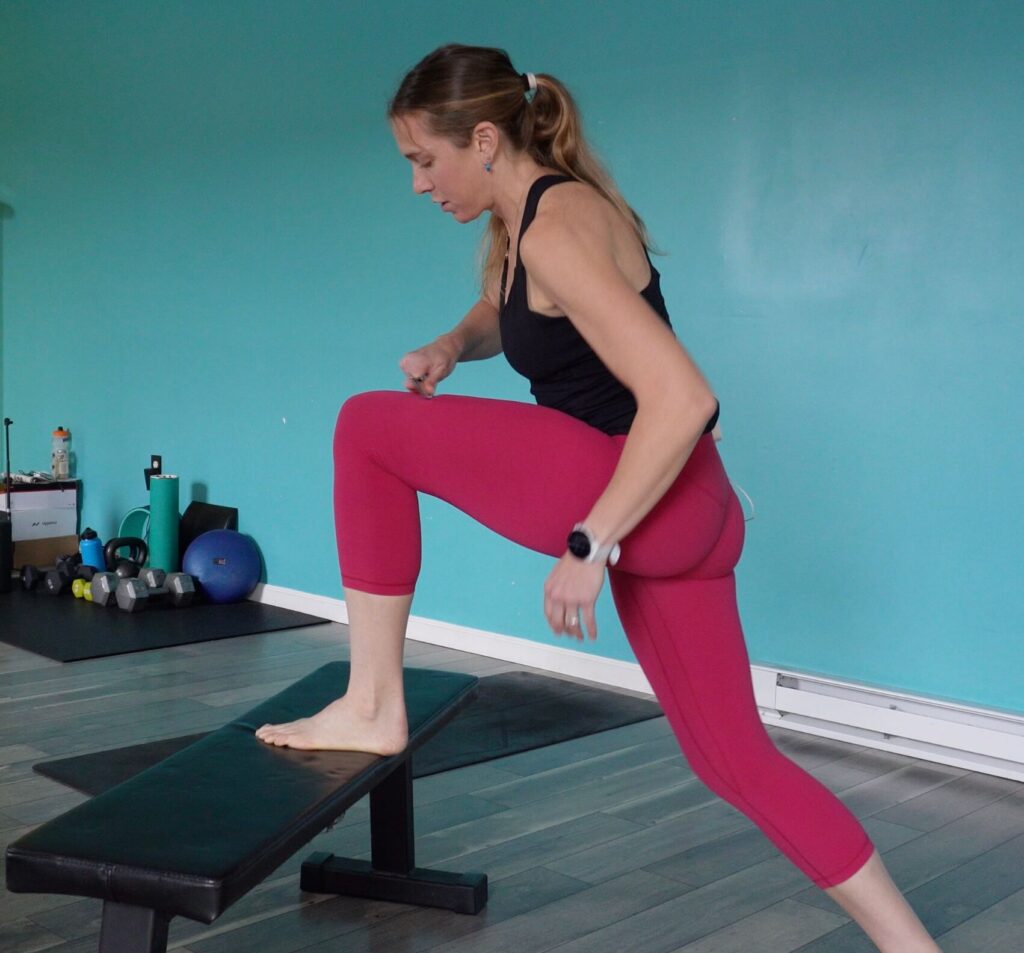
How Often Should I Do These Exercises?
Consistency is everything with this routine. Aim for 4–7 days per week, but keep it to one session a day to avoid irritation. Doing too much is the same as doing too little. Neither is good for you. Small, steady sessions beat one long weekly marathon every time. Give this plan 4–6 weeks, and you should see—and feel—real improvements.
Watch This How To Video:
Try the Tool We Trust Most
If you want to get even more out of this routine, the right tool makes a huge difference. At Mobility-Doc, we use Sidekick muscle scraping tools every single day in the clinic because they’re consistent, durable, and designed to help your tissues move the way they should.
Our go-to is the Sidekick Echo. It’s the perfect balance of shape, weight, and grip, which makes it easy to use around the knee — especially on the quads, IT band, and adductors. It’s also the one we recommend most for home use because people can learn it quickly and actually feel the results.
If you’re ready to reduce stiffness, improve mobility, and finally give your knee the relief it’s been missing, the Echo is an easy upgrade that fits right into the exercises you’re already doing.
Feel free to reach out if you’re not sure which tool is right for you — we’re always happy to help you choose what works best for your recovery.

